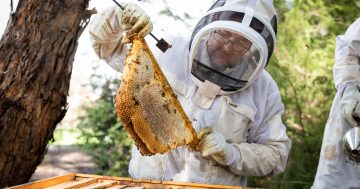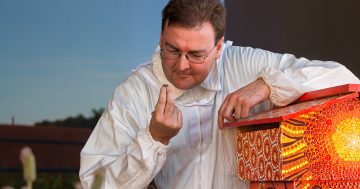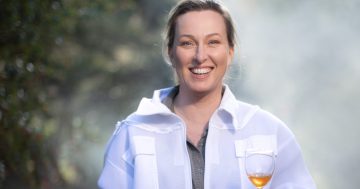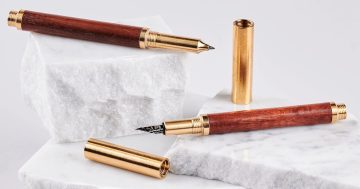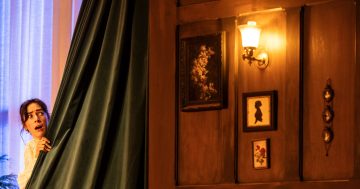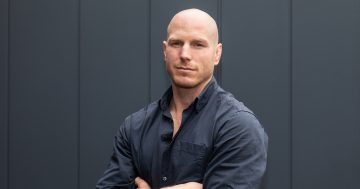
Head beekeeper at Parliament House and environmental scientist, Cormac Farrell in front of some of his hives. Photo: Cormac Farrell.
Bee warned: it seems everyone wants to escape the Canberra winter.
About 14,000 of some of Canberra’s most famous residents, the native stingless Parliament House bees, have headed north for the winter. And they’re certainly not slumming it. They’ve set up hives in the kitchen garden of no less than Sydney’s Government House, complete with its rather spectacular view of the Opera House.
Head beekeeper at Australia’s Parliament House, Cormac Farrell, personally escorted the political insects to Sydney last week. The two hives, with about 7000 bees in each, were secured in the back of his car by seatbelts for the three-hour journey.
They travelled in Hive Havens, an award-winning design that Cormac said was currently being tested.
These hives, made from composted recycled plastic, were installed at Parliament House in 2017. By using a hollow insulation cavity filled with liquid, the hive can maintain natural air conditioning for the bees. It also allows for easier honey harvesting, with a small honey chamber on top of the hive allowing the native stingless honey, known as “sugarbag” honey, to be extracted without having to fully open the hive.
It’s the fourth year such a winter break has been organised for the Parly bees. Canberra winters, it seems, play havoc with their social activity – to say nothing of their long-term health.
For them, Canberra frosts are a killer, literally.
“I just pack them into the car, they’re surprisingly easy to move,” Cormac said.
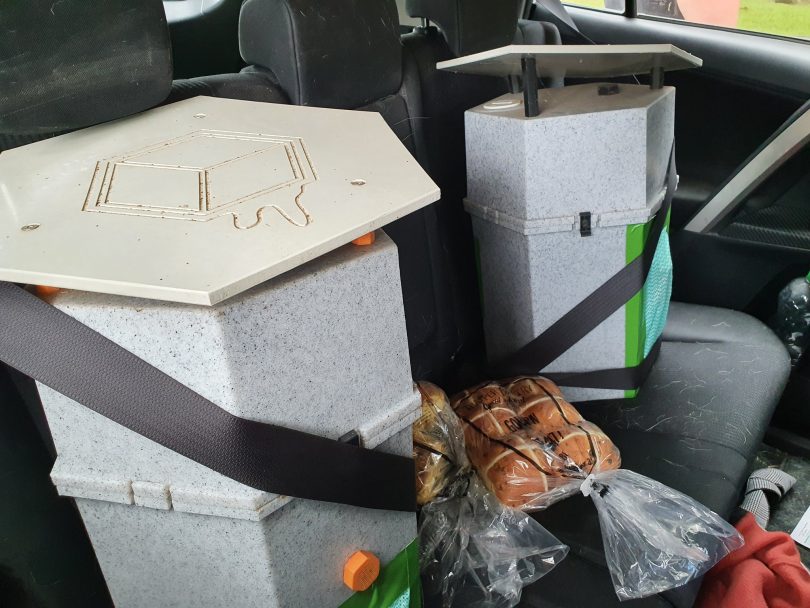
The Parliament House beehives, secured by seatbelts in Cormac Farrell’s car for the trip to Sydney, along with some Easter snacks. Photo: Cormac Farrell.
“Native bees spend most of their days foraging so when they come home at night, and we think they’re all in, we put a screen over the front door – they can’t get out but they can breathe.
“It’s fortunate that the native bee colonies are small, they usually only weigh less than 10kg. The honeybee colonies can weigh over 50kg.”
Cormac said it also helped that the defence mechanism for native bees was to hunker down and stay in their hive whereas the honeybees were more likely to come out – and attack.
The winter sojourn to Sydney was made possible back in 2018 by the then Governor of NSW, the Honourable David Hurley, AC DSC (Retd), who was a bee enthusiast and gave permission for the bees to spend the winter at Government House. The NSW Governor today, Her Excellency, Margaret Beazley, AC QC, kindly agreed to keep the tradition going.
The six hives at Parliament House, four honeybee and two native beehives, produce honey with a clearly distinctive flavour because of the abundance of native and exotic trees throughout the gardens. This means the flavour, texture and taste of the honey produced will depend on whatever is in flower at the time.
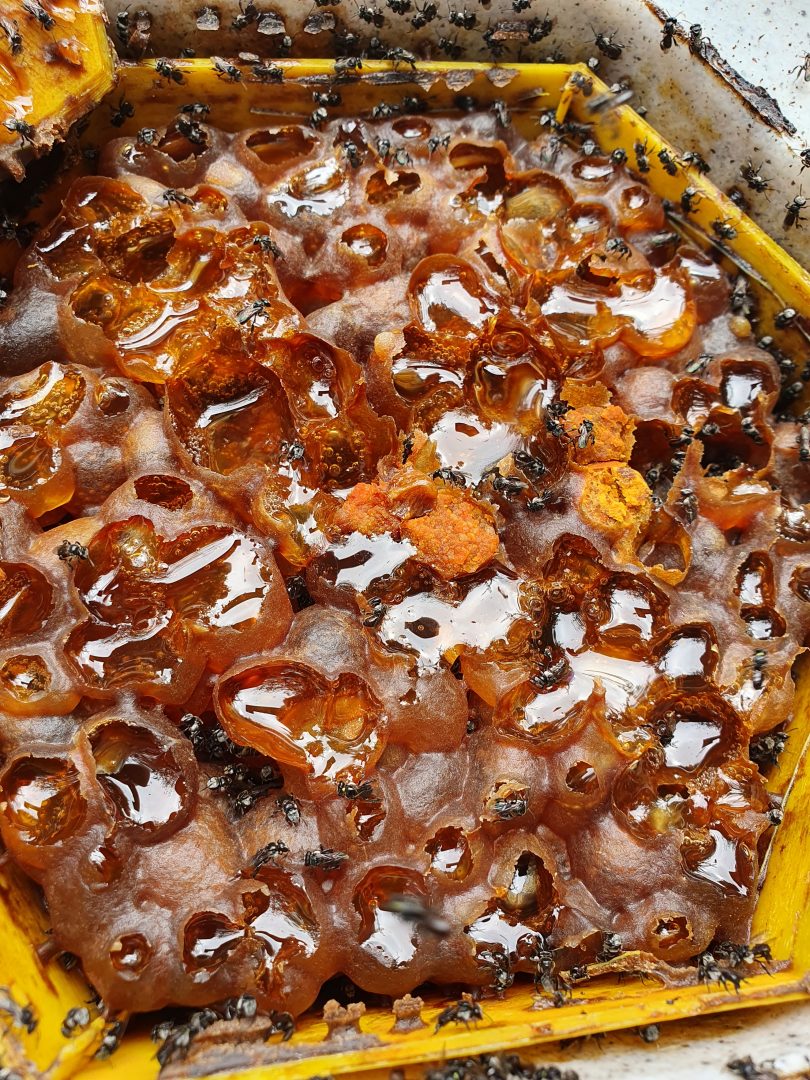
Looking down into the hive’s honey chamber at the distinctive pots the bees create. Photo: Cormac Farrell.
Cormac said he expected a bumper harvest of honey this year, following the widespread rain and rapid growth everywhere.
When there’s a good season, some of the native honey is used by Parliament House chefs in special dishes for visitors to the House as well as in limited edition drinks, including honey vodka.
Bees were established at Parliament House back in 2016, following the tradition of beehives at the White House in Washington and also in Queensland and West Australian Parliaments. But the Australian Parliament is unique in that it has two species of bees – the common European honeybee and the native stingless.
Cormac, an environmental scientist, was looking after a number of hives on the roof of his employer’s building in Canberra but when the office moved, he asked if they could be housed at Parliament House.
In Canberra, Cormac works with the Parliament House landscaping team to ensure they thrive in the right environment. The Parliament team uses an integrated pest management system that reduces the need for pesticides, creating a safe haven for both honeybees and the more than 200 native bees that call the city home.
Cormac will make the trip back up the highway at the end of winter to bring the bees home again.












